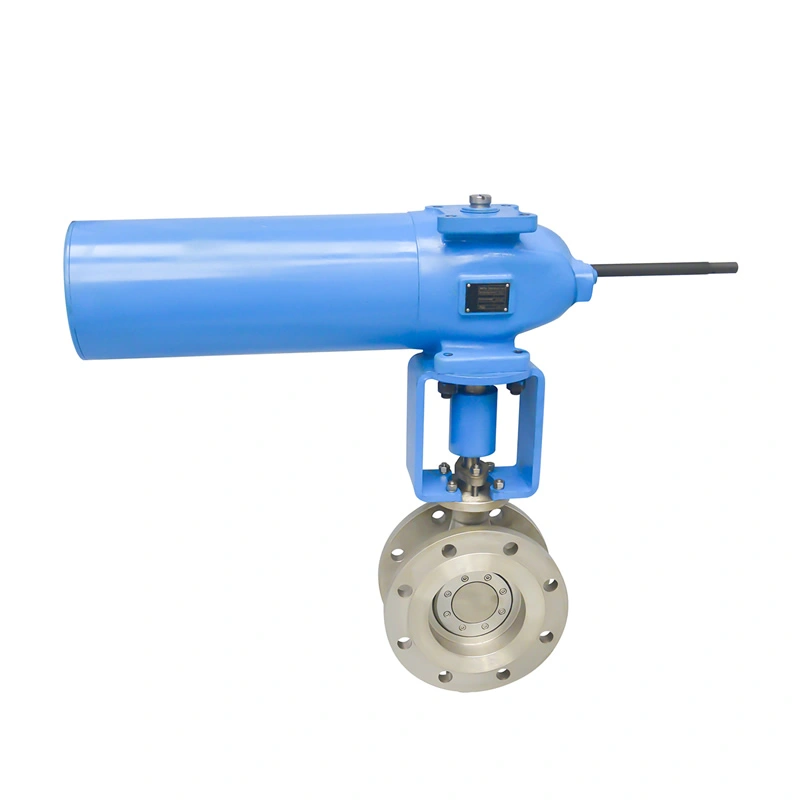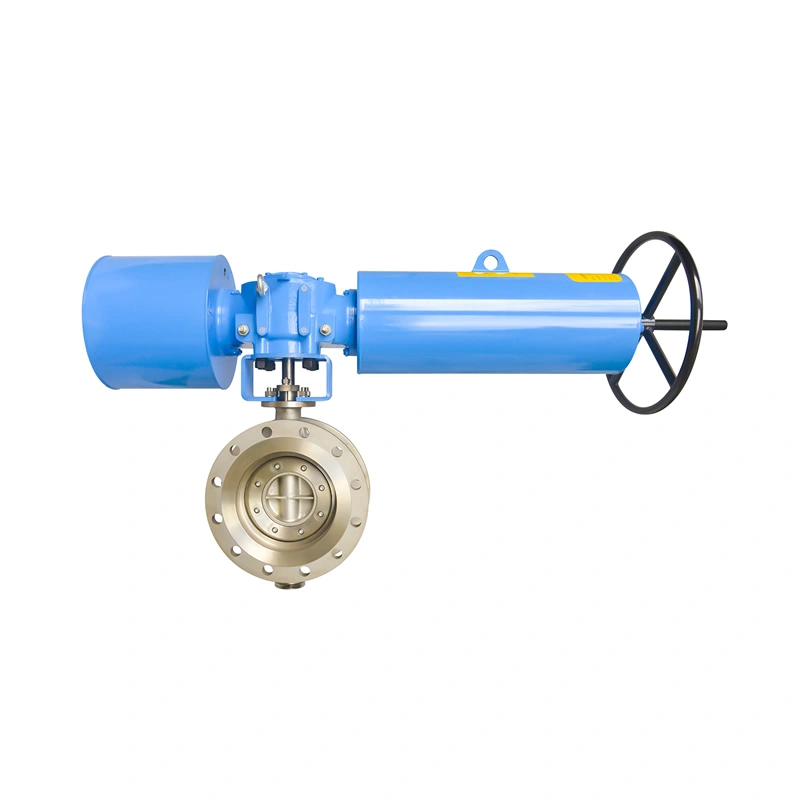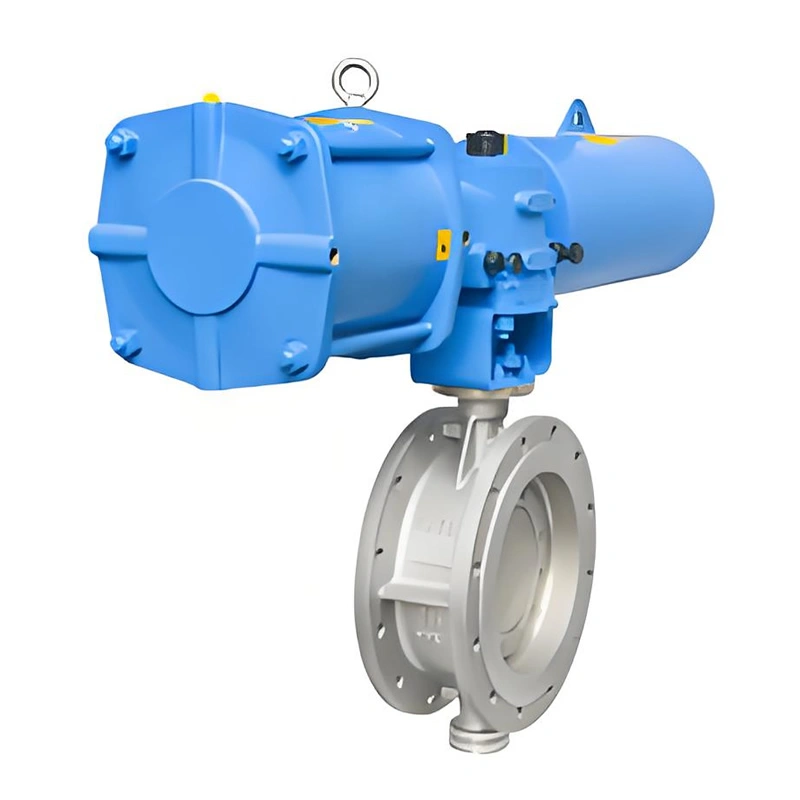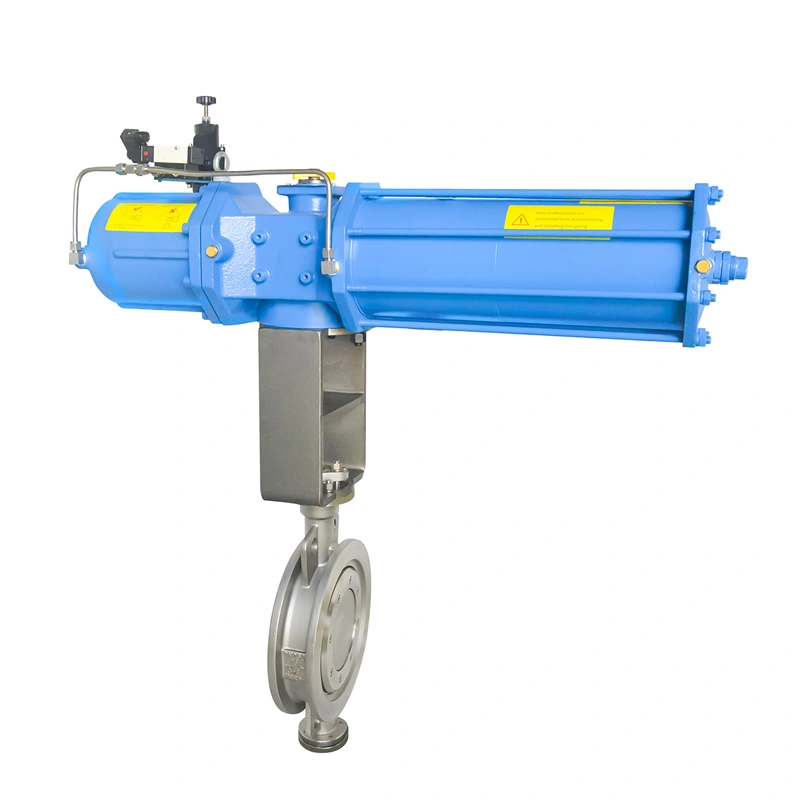- DN40-DN1200
- -196℃~ +650℃
- API 609, API 598, ASME B16.34, CE
- CF8 stainless steel
- Flange,ANSI B16.5,etc.
Specification
DN250 PN16 CF8 Metal-to-Metal Seat Flange End High-Temperature Pneumatic Triple-Offset Butterfly Valves
I. Product Overview
Newway’s DN250 PN16 CF8 Metal-to-Metal Seat Flange End High-Temperature Pneumatic Triple-Offset Butterfly Valve is engineered for demanding industrial scenarios where high-temperature fluid control is crucial. It merges advanced design, premium materials, and precise manufacturing to ensure reliable, long-asting performance in harsh thermal environments.
II. Important Attribute and Specification Parameters
A. Size and Pressure Rating
With a DN (nominal diameter) of 250, this valve can manage substantial fluid flow volumes. The PN16 pressure rating means it can operate under a maximum pressure of 16 bar, making it 适配 for medium – pressure industrial pipeline systems that also involve high – temperature conditions.
B. Material Options for High Temperature
CF8C: A variant of austenitic stainless steel, offering good corrosion resistance and elevated temperature strength. It can withstand temperatures up to around 800°C in some applications, resisting oxidation and maintaining mechanical properties.
310S: A high – temperature austenitic stainless steel. Ideal for extreme heat, it can handle continuous service temperatures up to 1150°C. It has excellent oxidation resistance in high – temperature, corrosive atmospheres.
316: A widely used austenitic stainless steel. While not as high-temperature-rated as 310S, it still performs well in moderately high-temperature (up to around 800°C) and corrosive environments, with good resistance to chemicals like acids.
304: A common austenitic stainless steel. Suitable for lower high-temperature ranges (up to around 750°C), it provides good corrosion resistance and formability, often used in less extreme thermal-corrosive conditions.
The valve body and disc can be constructed from these materials based on specific application needs, ensuring compatibility with the fluid and temperature of the system.
C. End Connection
Featuring a flange end connection, it adheres to standard industrial flange dimensions. This allows for straightforward integration into existing pipeline setups, ensuring a secure and leak – proof joint when properly installed, which is vital for maintaining system integrity under high – temperature operation.
D. Actuation Type
Pneumatic actuation is utilized. This enables rapid response to control signals, facilitating quick opening and closing of the valve. In high-temperature processes, the ability to swiftly adjust fluid flow can help maintain process stability and prevent damage from temperature-related fluctuations.
Product Overview
III. Features Description
A. Triple-Offset Design
The triple – offset geometric design is a standout feature. It involves offsetting the disc’s axis in three planes. During operation, as the valve opens or closes, the disc gradually disengages from the seat, minimizing friction. When closed, precise alignment ensures a tight seal, even under high-temperature and pressure differentials. This design also reduces wear on the seat and disc, extending the valve’s service life in high-temperature environments where thermal expansion could otherwise impact sealing.
B. Metal-to-Metal Seat Advantages
The metal-to-metal seat is crucial for high-temperature applications. Unlike soft seats that can degrade or lose sealing ability at elevated temperatures, the metal seat maintains its integrity. It can withstand the thermal cycling and high temperatures without significant leakage, ensuring the valve’s reliability in processes where temperature variations are common. The robust nature of the metal-to-metal seal also contributes to the valve’s ability to handle high-pressure conditions simultaneously.
C. High-Temperature Material Benefits
The availability of materials like CF8C, 310S, 316, and 304 allows for customization based on the application’s thermal and corrosive demands. For example, in a furnace exhaust system with extremely high temperatures, 310S can be used to ensure the valve doesn’t fail due to heat-induced material degradation. In a chemical plant with moderately high temperatures and corrosive chemicals, 316 can provide both temperature and corrosion resistance.
IV. Manufacturing Process
A. Material Selection and Preparation
First, the appropriate high-temperature material (CF8C, 310S, 316, or 304) is selected based on the intended application. The raw material is inspected for quality, ensuring it meets the required chemical composition and mechanical property standards for high-temperature service. It is then cut and shaped into rough blanks for further machining.
B. Precision Machining
CNC (Computer Numerical Control) machining is employed to achieve the precise dimensions of the valve body, disc, and other components. The triple-offset design of the disc requires extremely accurate machining to ensure the correct geometric offsets. The flange ends are also machined to strict tolerances to ensure proper sealing. Surface finishing processes may be applied to enhance corrosion resistance, especially important for high-temperature applications where oxidation can be a concern.
C. Assembly and Quality Testing
Components are assembled with care, ensuring the metal-to-metal seat is correctly installed for optimal sealing. The pneumatic actuator is attached and calibrated to ensure smooth operation. After assembly, the valve undergoes rigorous testing. Pressure testing is performed to check for leaks under the rated PN16 pressure, and high – temperature testing may be conducted (depending on the material and application) to verify performance in extreme thermal conditions. Only after passing all tests is the valve ready for industrial use.




